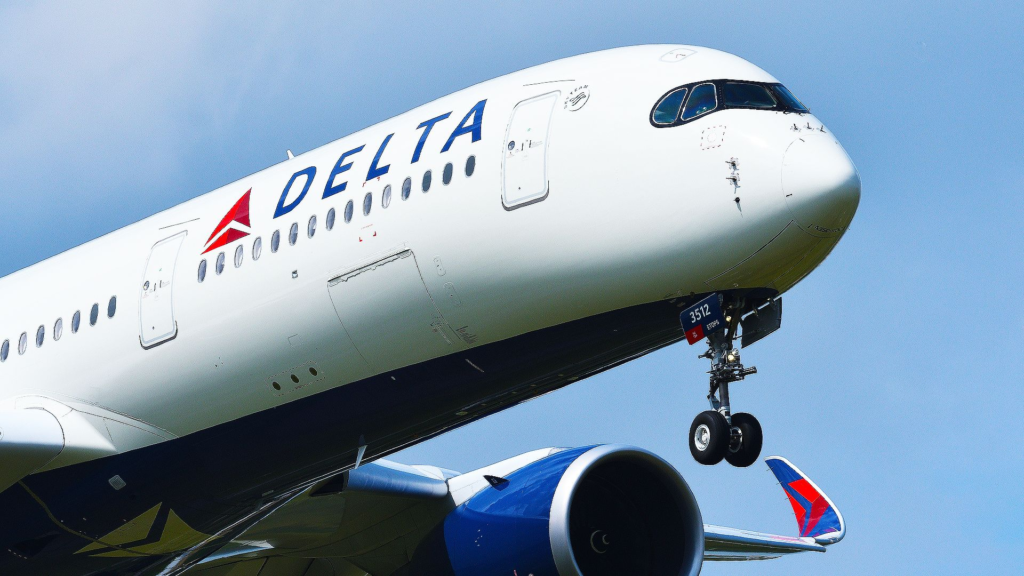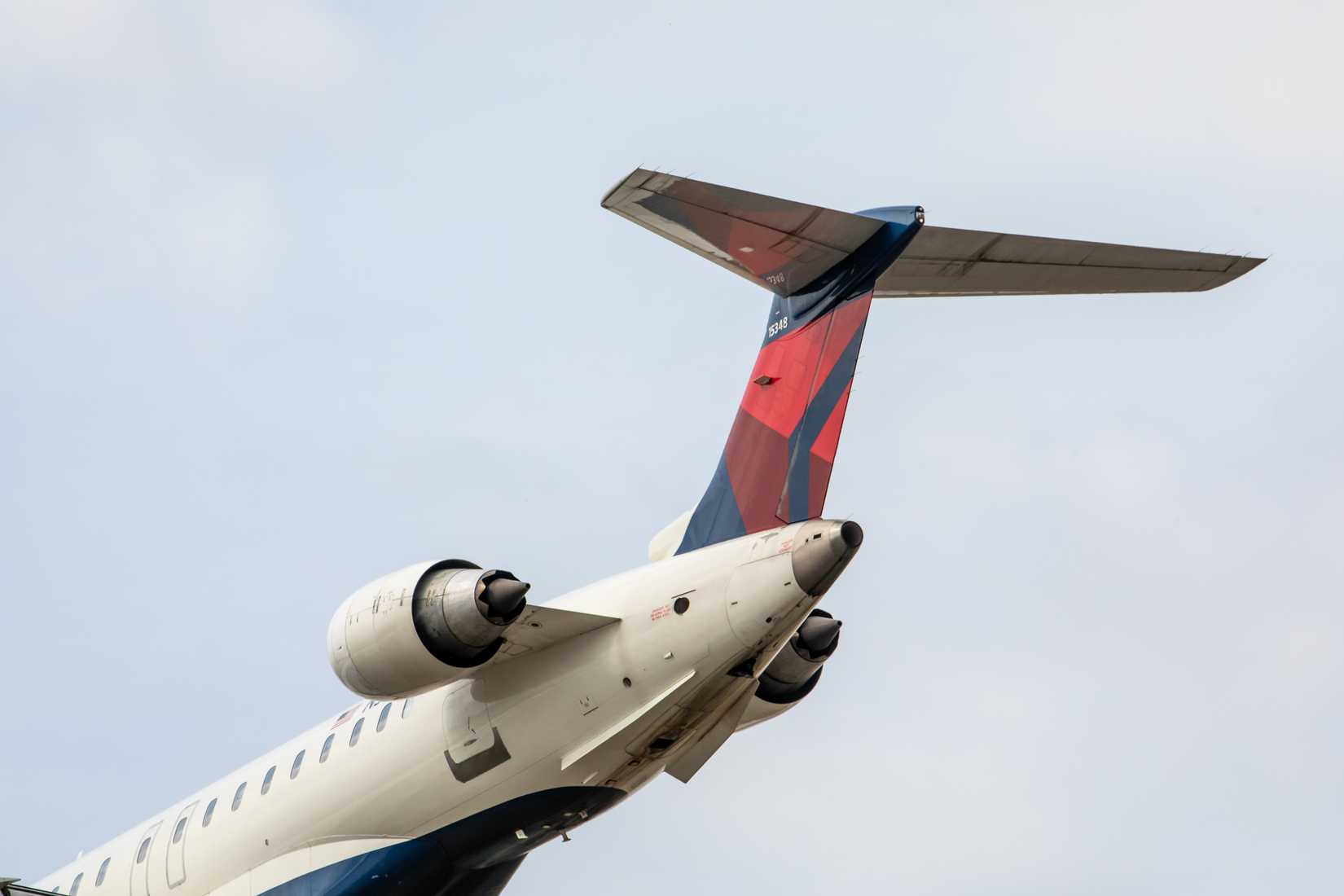![]() Delta Air Lines (NYSE: DAL) beat analyst earnings expectations when it announced its third-quarter earnings results, primarily on the back of record September-quarter revenues and a positive forward-looking tone. Overall adjusted revenues rose 4.1% to $15.2 billion, primarily led by premium traffic and loyalty revenue growth. Premium revenues grew by 9%, and American Express-related revenues reached $2 billion, marking a 12% year-on-year increase. Domestic unit revenues turned positive as main cabin softness hit an inflection point, and corporate sales rose 8%.
Delta Air Lines (NYSE: DAL) beat analyst earnings expectations when it announced its third-quarter earnings results, primarily on the back of record September-quarter revenues and a positive forward-looking tone. Overall adjusted revenues rose 4.1% to $15.2 billion, primarily led by premium traffic and loyalty revenue growth. Premium revenues grew by 9%, and American Express-related revenues reached $2 billion, marking a 12% year-on-year increase. Domestic unit revenues turned positive as main cabin softness hit an inflection point, and corporate sales rose 8%.
Non-fuel-related costs per available seat mile (CASM) were roughly in line with expectations, and Delta’s average fuel price of $2.25 per gallon due to the company’s refinery, which shields it from some fuel-related uncertainty. The airline’s guidance reinforced this forward momentum, with revenues rising roughly 2-4%. The airline’s margin guidance of 10.5-12% is industry-leading, and its FY25 earnings per share (EPS) sit at around $6.
A Brief Overview Of What This Means For The Airline
Today’s earnings release and subsequent call with company leaders offered strong momentum for Delta. The airline did have some warning flags coming out of its second-quarter results (which were positive), and the subsequent updates provided to investors at the Morgan Stanley Laguna Conference in September. For the most part, the company demonstrated a strong ability to manage costs despite a difficult operating environment.
Revenue generation in premium cabins continued to cement Delta’s position as an industry leader. The carrier has been the king of capturing premium demand and expanding margins in Business Class and Premium Economy cabins. Its partnership with American Express continues to allow it to monetize its loyalty program in a way that none of its competitors can challenge. Furthermore, the airline’s improved performance in the Main Cabin helps address investor concerns over the weaker performance that was reported during the second quarter and analyzed further during the Laguna Conference.
How Did Investors React To Today’s News?
Early this morning, Delta Air Lines announced its results, leading traders to buy Delta shares in the wake of the airline’s strong earnings performance. The airline’s trajectory from its report indicated that growth would continue to be bullish, and that demand for passenger air travel remained strong. Shares rallied as high as 7% above yesterday’s closing prices, quickly making the morning headlines.
The initial excitement rippled across the industry, with carriers like ![]() American Airlines, United Airlines, and Alaska Airlines all seeing their share prices increase by around 3-5%. All of these airlines rely heavily on premium traffic to guide their margin growth, so Delta’s premium demand-oriented rhetoric likely pushed traders and portfolio managers to buy the stock. Delta’s improved performance and rhetoric surrounding the main cabin also led to some positive reactions from airlines like Southwest, which are more geared towards non-premium travelers. Things changed by mid-afternoon, and as of roughly 3 PM, share prices had fallen significantly from their morning highs, as seen in the table below:
American Airlines, United Airlines, and Alaska Airlines all seeing their share prices increase by around 3-5%. All of these airlines rely heavily on premium traffic to guide their margin growth, so Delta’s premium demand-oriented rhetoric likely pushed traders and portfolio managers to buy the stock. Delta’s improved performance and rhetoric surrounding the main cabin also led to some positive reactions from airlines like Southwest, which are more geared towards non-premium travelers. Things changed by mid-afternoon, and as of roughly 3 PM, share prices had fallen significantly from their morning highs, as seen in the table below:
|
Airline: |
10/09/2026 Return: |
|---|---|
|
Delta Air Lines (DAL) |
5.00% |
|
United Airlines (UAL) |
3.16% |
|
American Airlines (AAL) |
-1.52% |
|
Southwest Airlines (LUV) |
-2.10% |
|
Alaska Airlines (ALK) |
-0.22% |
When Delta’s team spoke to investors and took questions from industry analysts at its third-quarter earnings call around 10 AM this morning, it became clear that Delta’s cost diligence was a key part of why the airline was able to outperform its earnings expectations. Delta’s fully-owned fuel refinery helped it keep fuel costs low (a problem for airlines like Alaska Airlines), and the airline was also diligent enough to keep non-fuel costs on track with expectations. This shifting rhetoric led traders to sell the stock, as well as those of peers.
What Is Our Outlook Going Into Airline Earnings Season?
With today’s results release, Delta Air Lines has kicked off the North American (and European) airline earnings season. It did so by setting the tone, arguing that it is a market leader with a strong premium-oriented brand. It highlighted its ability to capture premium demand, which continues to grow, while assuaging concerns that it is no longer able to fill seats in the back of the plane.
Looking ahead, ![]() United Airlines will report next week, and we see the bar for outperformance as certainly higher than it was before today’s release. United shares shot up notably, with investors trading on the carrier’s strong premium-oriented rhetoric. This will likely shift the key catalysts for market responses to United’s earnings towards the cost side of the profitability equation.
United Airlines will report next week, and we see the bar for outperformance as certainly higher than it was before today’s release. United shares shot up notably, with investors trading on the carrier’s strong premium-oriented rhetoric. This will likely shift the key catalysts for market responses to United’s earnings towards the cost side of the profitability equation.
Delta’s outperformance does not assuage many investor concerns about the industry. The carrier was only able to avoid the negative impacts of rising fuel costs by owning its own refinery. Furthermore, the airline’s economy class margins grew because the airline made a concerted effort to continue removing main cabin seats and shift towards premium cabins, artificially making it easier to fill them. These are all risks investors will need to keep their eyes on.





